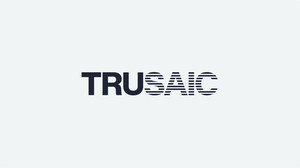
New Research from Trusaic Reveals Majority Fall Short On Pay Equity Practices; Multinationals On Notice As Deadline For Gender Pay Gap Directive Looms
LOS ANGELES, Oct. 8, 2025 /PRNewswire/ -- New research from Trusaic reveals that fewer than 1 in 5 organizations are ready to meet the requirements of the European Union Pay Transparency Directive (EUPTD) based on their current pay equity practices — and the clock is ticking.
The Directive, designed to combat pay discrimination and address persistent gender pay disparities across the EU, takes effect in June 2026. Under the Directive, employers with workers in the EU must now meet new stringent obligations for pay transparency and reporting, including granting employees the right to information regarding pay. The Directive also introduces access to compensation for employees who have experienced pay discrimination, shifting the burden of proof onto employers.
The 2025 Pay Equity Policies and Practices Report: EUPTD Lens is a joint project of pay equity software provider Trusaic and Empsight, a provider of specialized compensation data for Fortune 1000 and large multinational companies. Building on last year's results, the second annual study analyzed data from compensation professionals in 429 large organizations — 76% of which have operations in Europe – taking a deep dive into their pay equity practices.
The findings suggest most organizations still have significant work to do to address pay equity more comprehensively and broadly. Many organizations may not fully understand what is required to be in compliance; this report provides a detailed breakdown of why many organizations are not prepared:
- Organizations are not analyzing all required components of pay. Just 16% of organizations are ready to meet the requirements of the EUPTD using base pay, a fixed rate of pay before any other compensation elements are added — and one that is still insufficient for the EUPTD. This figure drops to 3% when using total cash compensation, which includes short-term incentives such as bonuses for achieving immediate goals like sales targets, and to 2% when using total direct compensation, which includes long-term incentives like stock-based rewards. Excluding these components can obscure actual gender pay disparities and undermine the intent of the EUPTD.
- Internal and external pay transparency is limited. Most organizations are only disclosing pay information with internal leadership or their HR and legal teams. Few organizations make pay equity results public or disclose full salary ranges to their employees, limiting accountability and trust.
- The methods for analyzing pay equity lack rigor. 50% of organizations analyze pay equity using basic statistics, which fail to account for factors like education, experience, or job responsibilities. Fewer organizations (37%) use multiple regression analysis, the method best aligned with EUPTD's requirements for justifying pay differences using objective, gender-neutral criteria.
- Timing is troubling. While regular analyses are key to promptly identifying and correcting pay inequities, many organizations do not conduct annual pay equity assessments. In addition, while most organizations remediate base pay gaps within a year, few correct inequities in short-term and long-term incentives within that timeframe, risking non-compliance with the EUPTD's mandate.
- Financial services leads; Healthcare lags. Financial services organizations are more advanced in their pay equity practices, in terms of the types of compensation they analyze, the methods they use, how often they conduct pay equity analysis and remediation, and their level of transparency. Conversely, healthcare organizations are most likely to lag in these areas.
- Perceived cost leads list of obstacles. While motivated to address pay equity, 64% of organizations cite the potential cost of addressing pay inequities as a key obstacle. Other barriers include ensuring proper job grouping and leveling for equity analysis, dealing with the root causes of pay equity, dependence on the discretion of line management in decision-making, potential employee reactions, gaining senior leadership support, and inadequate skills and experience conducting equity analysis.
- Organizations aim to reduce risk, build trust. The most common motivations for organizations' focus on pay equity are to mitigate legal risk (61%), build a culture of trust through transparency (57%), and attract and retain talent (55%).
The EUPTD aims to close the gender pay gap across the EU by applying the principle of "equal pay for equal work or work of equal value." Companies with 100 or more employees must submit gender pay gap reports demonstrating less than a 5% difference in average pay, base and total compensation, between female and male workers in any category; justify any pay gaps of at least 5%; or remedy pay gaps within six months.
The Directive also requires that larger companies (those with more than 250 employees) submit pay gap reports annually, while smaller companies must report every three years. In addition, the reports must be made available before and during employment to employees and workers' representatives. Companies that don't or can't comply, must participate in a joint pay assessment.
The EUPTD requires each of the 27 member states to transpose its rules into their national laws by June 7, 2026.
"The EU Pay Transparency Directive is fast approaching and compliance is mandatory. The reality is for most organizations there is only one annual salary review remaining before it takes effect," says Robert Sheen, CEO and Founder of Trusaic. "More than 50,000 companies are affected by the Directive, yet this study shows how few are actually ready. Organizations must take action immediately to prepare for these changes. Delaying can cost organizations both reputationally and financially."
About Trusaic
Trusaic is the world's most trusted software for pay equity and EU Pay Transparency Directive compliance. Our AI-powered software solutions guide global enterprises toward precise, compliant pay decisions at scale to achieve pay equity for their global workforces. Our pay equity suite of products is augmented by Trusaic AI agents that simplify complex pay equity and transparency reporting tasks with precision. Organizations that partner with Trusaic turn every pay decision into progress. For more information about Trusaic, visit https://trusaic.com/
Media Contact:
Brett Christie
(213) 814-5760
SOURCE Trusaic








Share this article